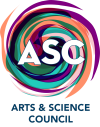ASC Grant Helps Bring Public Art – and an Added Sense of Pride – to Huntersville

By Page Leggett
Within an hour of the SculpTOUR Outdoor Art Exhibit being installed, someone passed April Dunn on the greenway, pointed to a sculpture and said, “This makes me proud to live in Huntersville.”
Dunn, who chairs the seven-member Huntersville Public Art Commission (HPAC), said, “I was on the verge of tears.” She knows the emotional power art can have.
An $8,500 ASC Cultural Vision Grant, which Dunn called “incredibly generous,” helped make it possible.
“We couldn’t have done this without ASC,” said Tracy Houk, assistant director of Huntersville Parks & Recreation. The town does not fund public art – Mecklenburg County supports public art throughout the county via its one percent for art ordinance. “Anything we do in that arena has to be funded through grants and private donations.”
The outdoor exhibition was in the planning stages for a year and a half. “We knew what we wanted to do,” Houk said. “Funding was the missing puzzle piece. As soon as we knew we’d be pay able to pay artists, we sent out the RFP,” or request for proposals.
The six-piece SculpTOUR exhibition is in Holbrook Park, along the downtown greenway that’s part of a larger greenway vision for the town, The Huntersville Vine. (It’s also part of the even larger Carolina Thread Trail, a regional network of connected greenways, trails and blueways encompassing 15 counties, two states and 2.9 million people.)
City leaders expect the SculpTOUR exhibition to ultimately play a significant role in economic growth. But not right away.
“I’m a realist,” said Dunn, who’s an accountant. “SculpTOUR isn’t necessarily going to immediately bring visitors to Huntersville, where they’ll spend their money at coffee shops, restaurants and retailers. But as we add more art, we’ll build awareness and increase foot traffic. And eventually, we’ll reach the tipping point where people do come to see the art. And they’ll linger and spend money. Eventually, this will have an economic impact.”
Being patient is a smart strategy. “We need to get to a saturation point,” Dunn said.
She knows the value of starting small. “Just look at Cornelius,” she said. “They started with a $300 piece of art. And now, they have the Cain Center.”
For now, it’s helping create a cultural identity for the town and a sense of belonging for residents.
All six sculptures, installed in late September, are being leased from the artists for two years. At end of the lease, the work will be available for purchase – or it may be reclaimed by the artist.
But exhibition organizers don’t intend to leave the trail art-less. They hope SculpTOUR will be a rotating exhibition. “We want to keep it fresh and vibrant,” Dunn said.
The element of surprise

The HPAC, which serves in an advisory capacity to the town’s Board of Commissioners, carefully considered locations for each sculpture. “We tried to make it so you wouldn’t see a sculpture until you turned a corner,” she said.
Dunn and her committee wanted to pleasantly surprise passersby with the unexpected.
“The way we’ve sited these sculptures makes people come face-to-face with art, whether they mean to or not,” she said.
Their strategy worked.
“Friends have told me, ‘I rounded a corner on the trail and was surprised to see a huge sculpture,’” Dunn said. “That’s just what we wanted.”
They also wanted to attract people from outside Huntersville. The art is doing that, too. A group from Davidson contacted Houk about coming to see it. “The word’s gotten out,” she said.
And reviews from the public have been positive. At a recent “Wine on the Vine” event on the greenway, guests could stroll the trail while listening to live music. “Having sculptures along the trail added a lot to the event,” Houk said.
Each one stands alone as unique – but they work collectively to delight visitors.
Decisions, decisions
Eighteen artists responded to the RFP, which came with very few parameters.
The committee wasn’t looking for just local and regional artists, but through happenstance, most of the artists chosen are North Carolinians. “We had artists from California and Maryland apply,” Dunn said. “We hoped to focus on local artists, but not to the exclusion of others. I’m happy that it worked out that five of the six pieces are by North Carolina artists.”
The committee was looking for variety – of colors, materials, concepts.
Huntersville Commissioner Lance Munger serves on the arts committee for the Board of Commissioners. As a non-voting liaison, he didn’t vote on the art, but he read all the proposals and shared his opinions. “I was impressed by the variety and caliber of proposals,” he said, adding, “I’m not an artist, but I do appreciate art.”
About the selection process, Dunn marveled over how one’s reaction to art can change over time: “We initially eliminated some pieces we ended up coming back to.”
One piece she wasn’t initially sold on is now one of her favorites. “Some 3-D work doesn’t translate well in a photo,” she said. “Once I saw this work in person, I was blown away by it.”
She loves how our impressions of art can change depending on the time, place and our state of mind. A knee-jerk first reaction doesn’t have to “stick.”
She recalled being at an exhibition at the Guggenheim 20 years ago she found offensive. She didn’t see what value the work had until she read about the artist after leaving the museum. “The artist’s intent was to shock,” she said. “Once I understood that, I realized he had done exactly what he set out to do.”
Houk agrees that learning about the artists’ goals impacts how you view the work. “Your first impression of each sculpture may not turn out to match the artists’ intent,” she said. It’s fun to read the artists’ descriptions to see if your opinion aligns with the artists’ intentions.”
The six sculptures that make up SculpTOUR are:
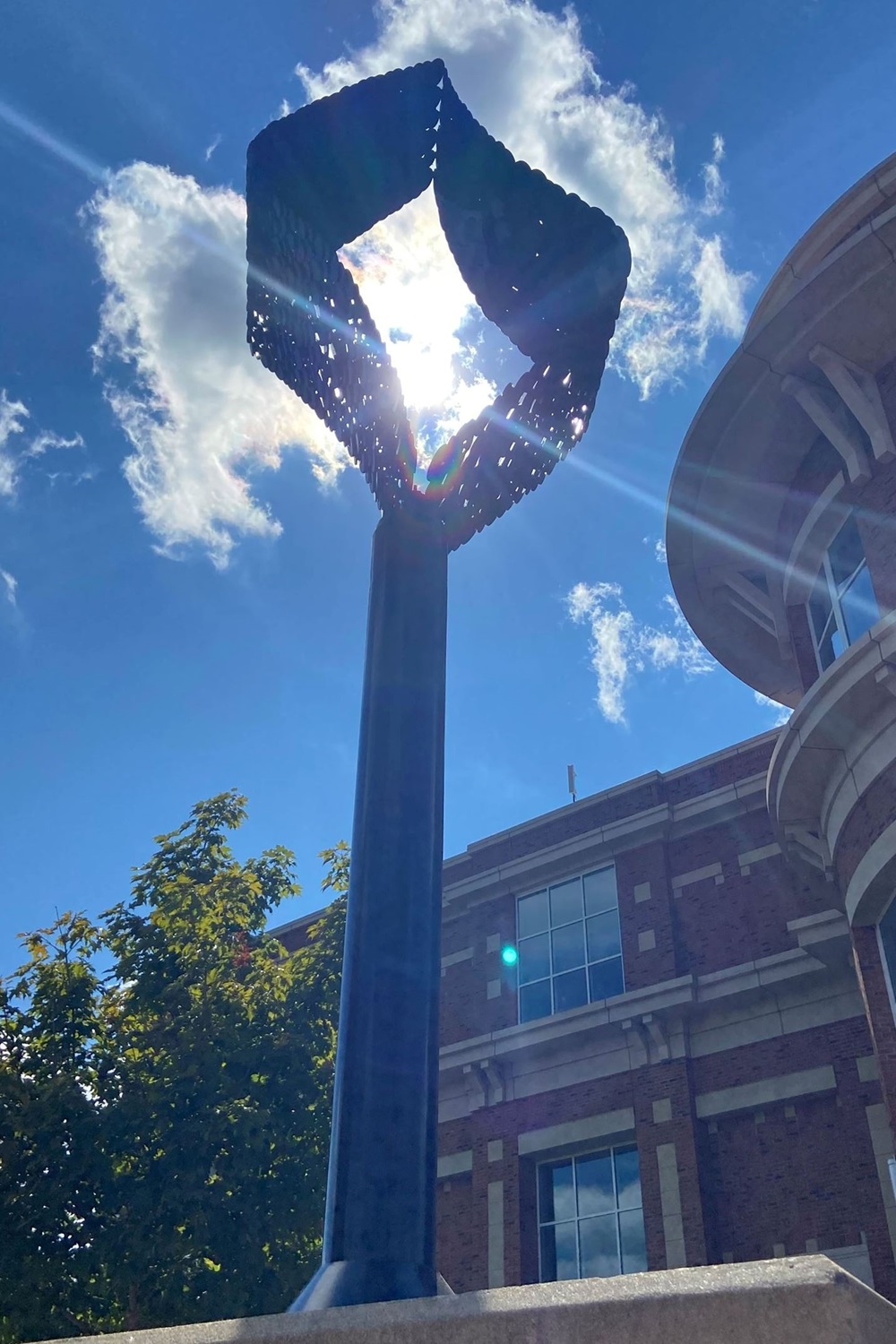
- “Joelukeben” is a 12-feet-tall kinetic sculpture powered by the wind with a surface that changes colors. Created by Bradley Tucker of North Carolina, the steel structure is at Huntersville’s Town Center Plaza. The sculpture’s movement is Tucker’s way of showing the path toward peace and enlightenment. Tucker has exhibited at Art Basel in Switzerland, New York, Los Angeles and more.
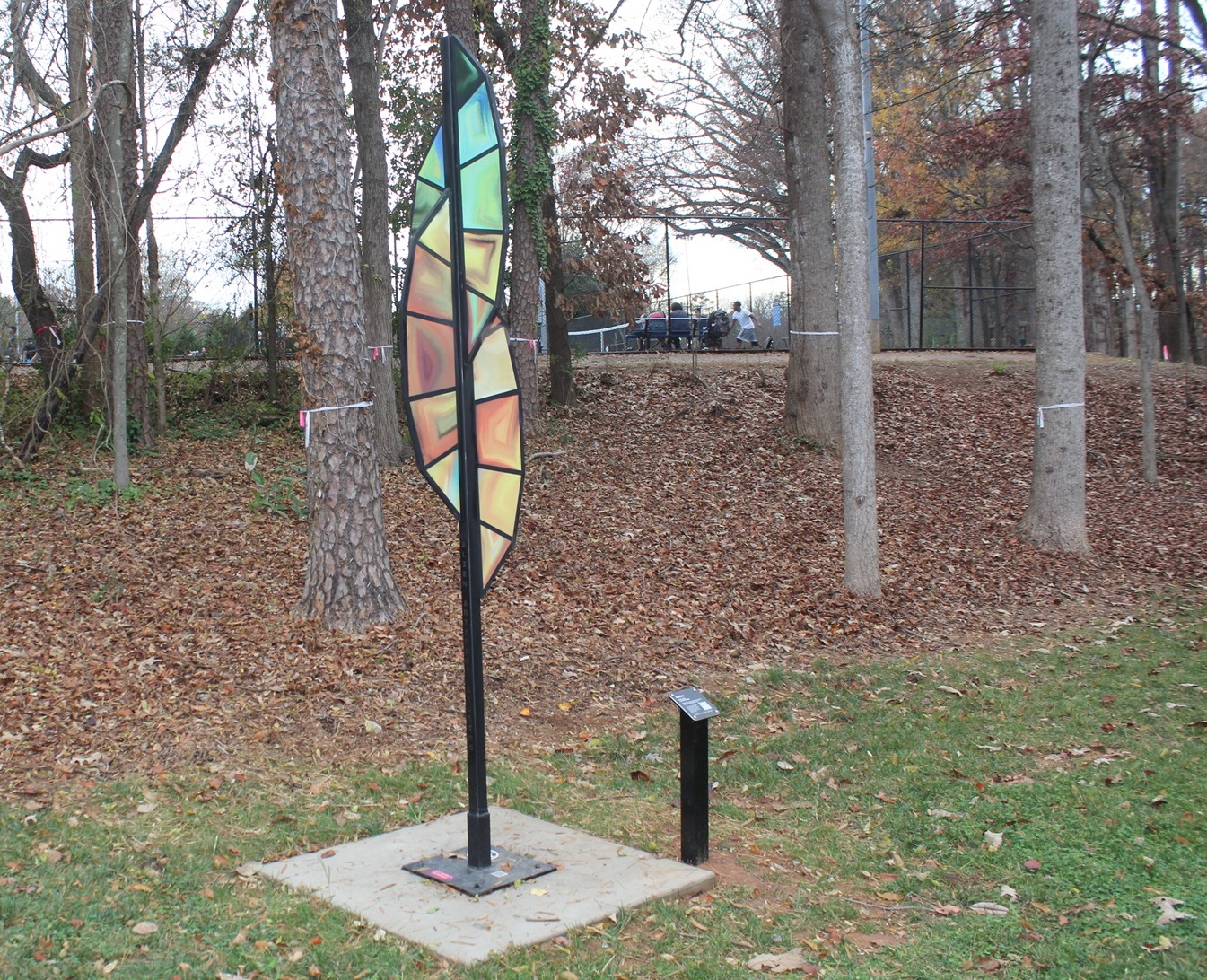
“Feather” by Kirk Seese. - Kirk Seese’s colorful, 10-feet-tall steel “Feather” is on The Vine. Seese has facilitated community art projects, designed multi-million-dollar indoor climbing gyms and designed, fabricated and installed large-scale work in 36 U.S. states. He wrote an ode to public art containing the lines: “What I love about you, public art, is that you are meant for everyone. You require no entry fee, cover charge or special invitation. Set free from the galleries, museums and private homes of the past. You’re out there, in the wild, unapologetic, yet vulnerable, and for everyone to see!”
- Hanna Jubran’s steel-and-cast-iron “Cube in Motion” is also stationed on The Vine. The nine-feet-tall, painted sculpture is true to its name; it really moves. “Kids love it,” Dunn said. Jubran’s work addresses the concepts of time, movement, balance and space.
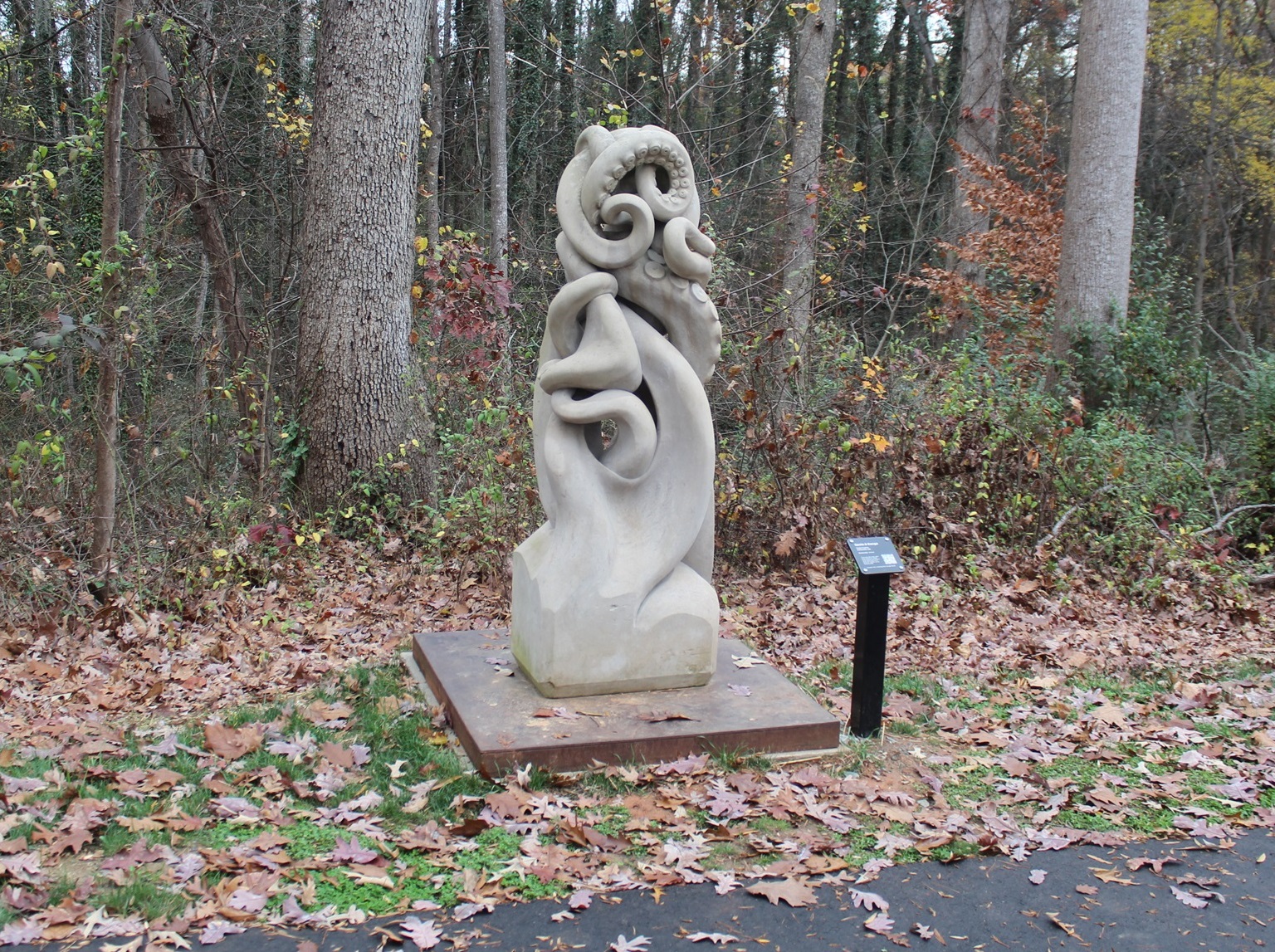
“Basin & Range,” created by Todd Frahm and Lara Ngyuen of Asheville. - Stone Cloud Studio – Todd Frahm and Lara Ngyuen‘s collaborative venture based in Asheville – created the stone “Basin & Range,” also located on The Vine. “‘Basin & Ridge’ will change based on the weather,” Dunn said. “It looks different in the rain. Some locals affectionately refer to it as “the octopus sculpture.”

“Barely Scraping By” by Wilmington artist Drew Coombes. - Also on The Vine is Drew Coombes’ metal “Barely Scraping By.” Coombes was born and raised in Statesville and grew up skateboarding and playing sports. At 27, he moved to Wilmington, North Carolina to study business administration. He later found a job at a metal shop, where his metal art began to take shape.

“Phoenix” by Jim Weitzel. - Jim Weitzel’s eight-feet-tall “Phoenix” is a part of the artist’s series called “Wings.” All the work in the series is made of thick, sculpted copper with additions of steel, wood and sometimes leather. Each piece is evocative of birds and angels. This one is an homage to the iconic, Instagrammable “Firebird” by Niki de Saint Phalle that greets visitors at the Bechtler Museum of Modern Art in uptown Charlotte. The artist includes medallions with inspirational words and poems on these sculptures and adds patinas to instantly age them.
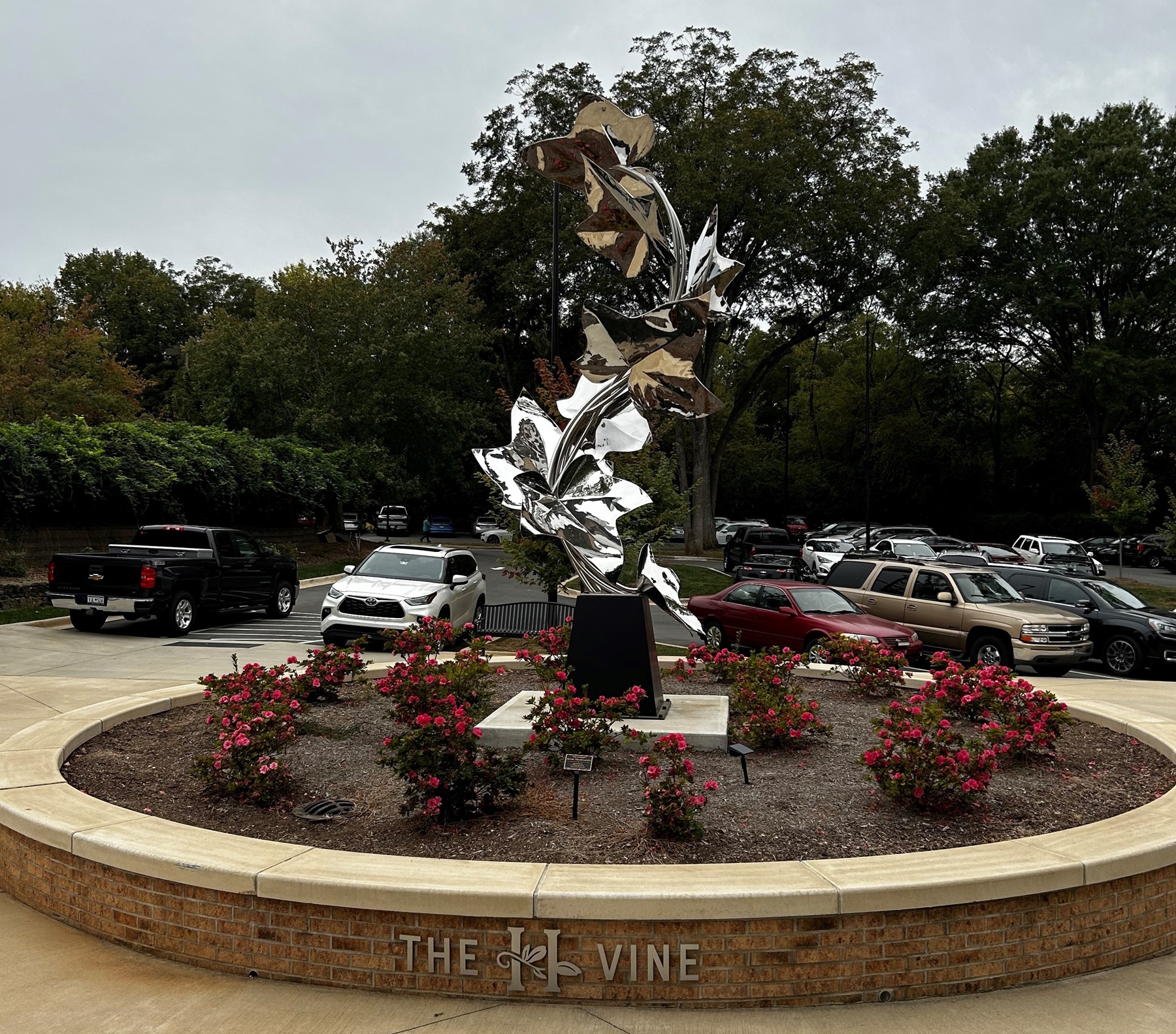
Dunn considers the anchor of Huntersville’s art trail to be David Landis “Ascension.” The stainless-steel sculpture, which she led the fundraising to acquire, was given pride of place at the trailhead entrance. Dunn said, “It’s really a signature piece.”
She’s an accountant with an artist’s soul. She’s already feeling down about leaving her post as committee chair in a few weeks. She knows what a difference art can make to people. And to a town. “Art matters,” she said. “Every time I see a traffic circle, I think: Put some art there!
“What public art says to people is: “‘Somebody cares.’”
